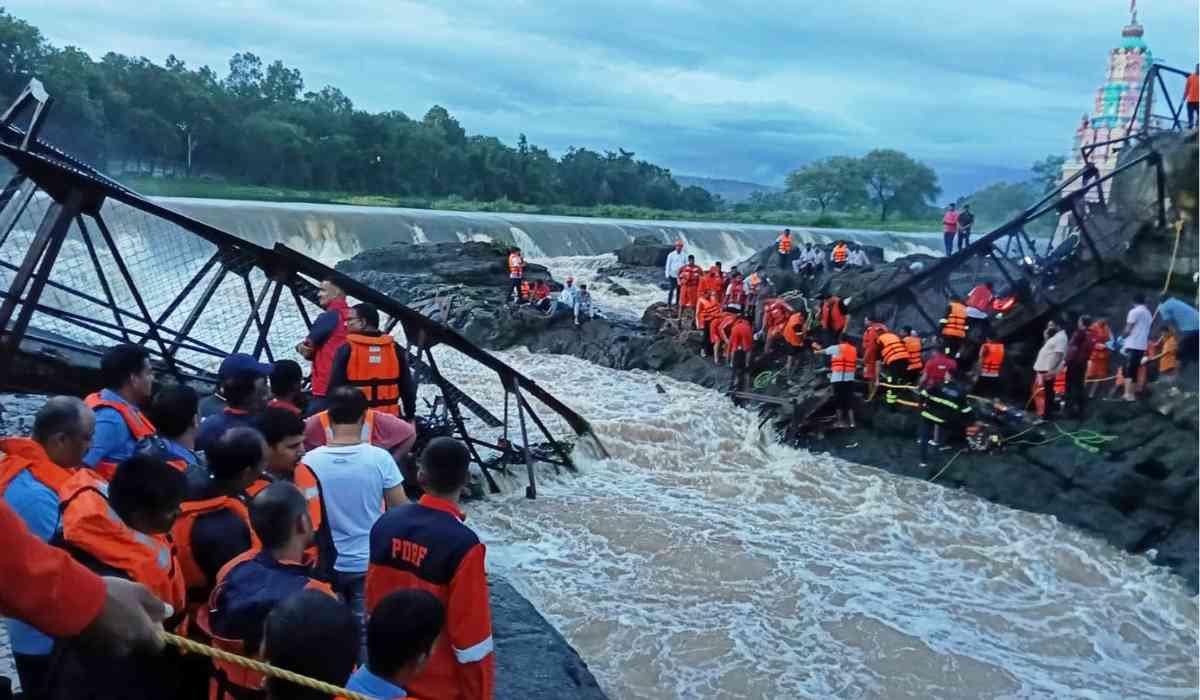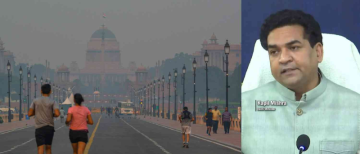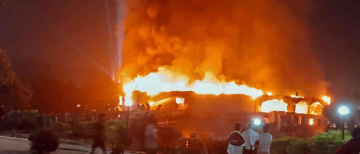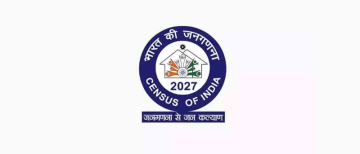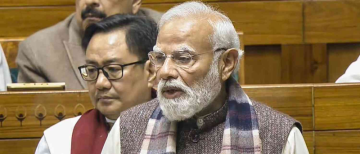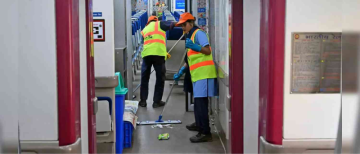In a heartbreaking incident that has sparked outrage and calls for accountability, a pedestrian footbridge over the Indrayani River in Pune’s Maval tehsil collapsed on Sunday afternoon, killing four people and injuring over 50. The tragedy unfolded in the Kundamala area — a popular monsoon picnic spot — when a large crowd, including tourists and two-wheelers, gathered on a 32-year-old iron footbridge that had long been deemed unsafe.

Pune Bridge Collapse: What Happened?
The collapse occurred at around 3:15 PM on Sunday, June 15, in the scenic Kundamala area of Talegaon, Pune. Officials received the first distress calls by 3:30 PM. At the time of the incident, the Indrayani River was swollen due to days of heavy rainfall, although it wasn’t raining during the collapse. Eyewitnesses described chaotic scenes of tourists falling into the river, some swept away by the current.
According to officials, the narrow bridge — designed solely for pedestrians — had become dangerously overcrowded. At least 100 to 300 people, and multiple two-wheelers, were on the structure when it gave way. Witnesses reported feeling the bridge tremble minutes before its collapse.
“There was a huge crowd on the bridge. The road was jammed due to vehicles coming from both sides... The bridge collapsed and people standing in the middle were swept away,” said one survivor.
Death Toll and Injuries
-
4 people confirmed dead, including Chandrakant Salve, Rohit Mane, and Vihaan Mane; the fourth is yet to be identified.
-
51 to 55 individuals injured, many requiring hospitalization.
-
3 individuals, including a child, were still missing at the time of reports.
-
Search and rescue teams from NDRF, fire departments, and local police conducted operations for over 15 hours.
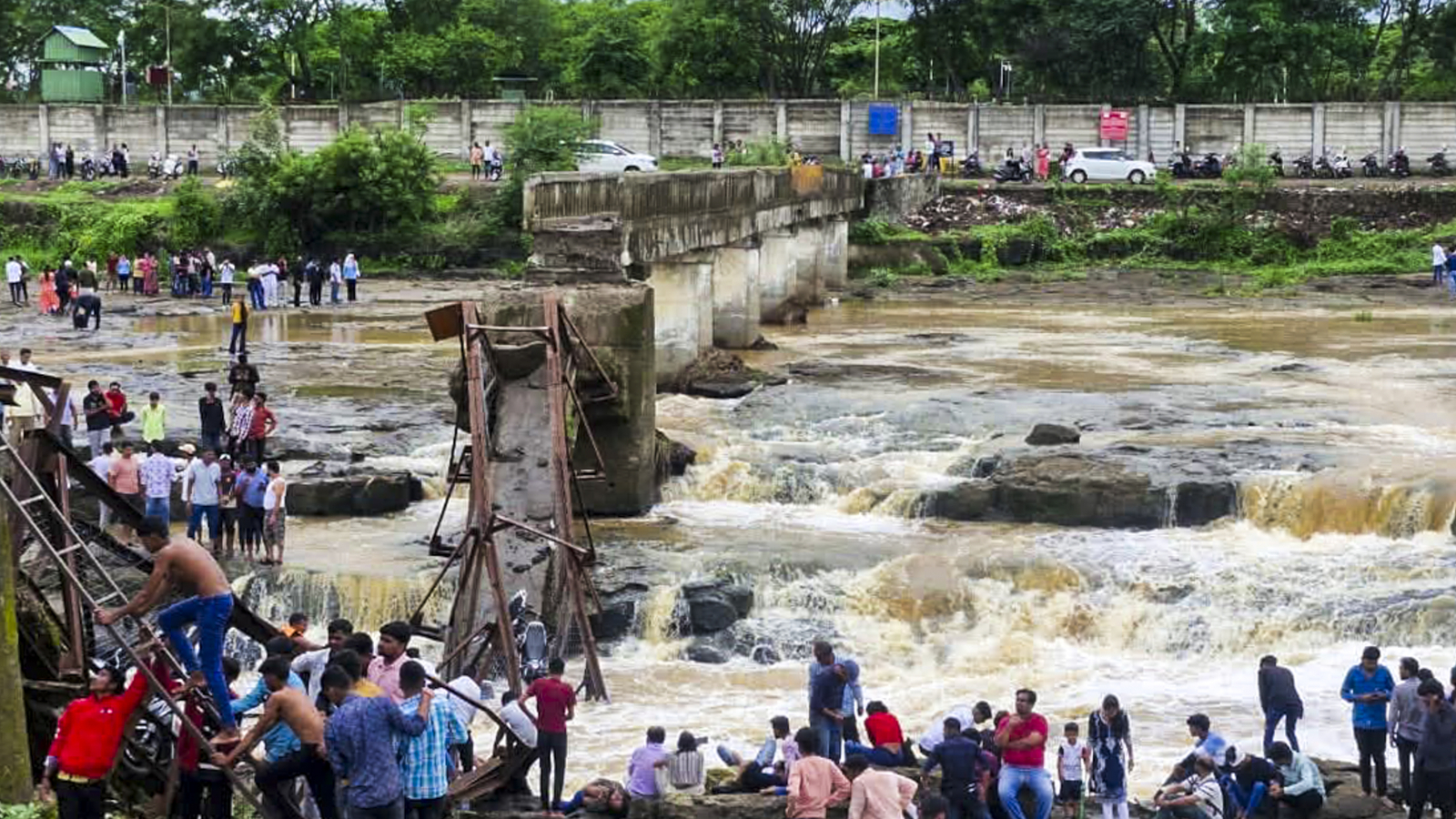
Structural Failure, Rust, and Neglect: A Deadly Combination
Bridge Details
The bridge was approximately 470 feet long and only 4 feet wide. It consisted of:
-
A 70–80 ft stone slope
-
Two 100-ft iron sections
-
One 200-ft cement portion
According to structural experts and local authorities, the bridge was:
-
Over 30 years old
-
Heavily rusted
-
Marked with visible potholes
-
Never subjected to a recent structural audit
Despite visible signs of deterioration and repeated warnings from locals, no repairs were made. Temporary cement blocks were used by locals to cover potholes.
“The bridge was quite old and there used to be discussions about its renovation… but unfortunately, it could not be done,” said NCP-SCP MLA Rohit Pawar.
Ignored Warnings and Bureaucratic Apathy
-
In 2017, former MLA Digambardada Bhegde submitted a formal request to reconstruct the bridge.
-
In 2022, BJP MLA Ravindra Chavan sanctioned ₹80,000 for repair — the funds were never utilized.
-
Locals wrote to the Public Works Department and Gram Panchayat, demanding repairs and a tourist ban.
-
Despite this, no structural audit was carried out, and no proper security or barricades were installed.
Even worse, administrative inaction played a direct role in the tragedy:
-
Hours before the incident, locals called the police control room to report overcrowding.
-
Three officers arrived and briefly dispersed the crowd — but left the site unguarded, after which the crowd returned.
-
Police were deployed near the bridge only on Saturdays, despite the area being a monsoon hotspot.
Overcrowding Ignored
The narrow bridge could accommodate only one bike and two pedestrians at a time, but 7–8 bikes and 100–300 tourists were on it simultaneously. The bridge was already prohibited for two-wheelers, with a visible warning board. Despite this, many ignored the advisory, excited by the scenic views and monsoon flows.
“People were excited for monsoon tourism… This bridge was restricted for people and two-wheelers, but tourists flocked to the site and it collapsed,” said Minister Makarand Patil.

Official Response and Rescue Efforts
-
Maharashtra Deputy CM Ajit Pawar confirmed rust and overcrowding as key causes.
-
Disaster Management Minister Girish Mahajan stated that the bridge caved under pressure from the crowd.
-
District Collector Jitendra Dudi admitted that the area was flagged as dangerous, and advisories had been issued.
-
Compensation of ₹5 lakh was announced for families of the deceased.
-
NDRF teams, fire brigades, and police personnel used cranes and divers for rescue.
-
CM Devendra Fadnavis briefed PM Narendra Modi and Union Home Minister Amit Shah on relief efforts.
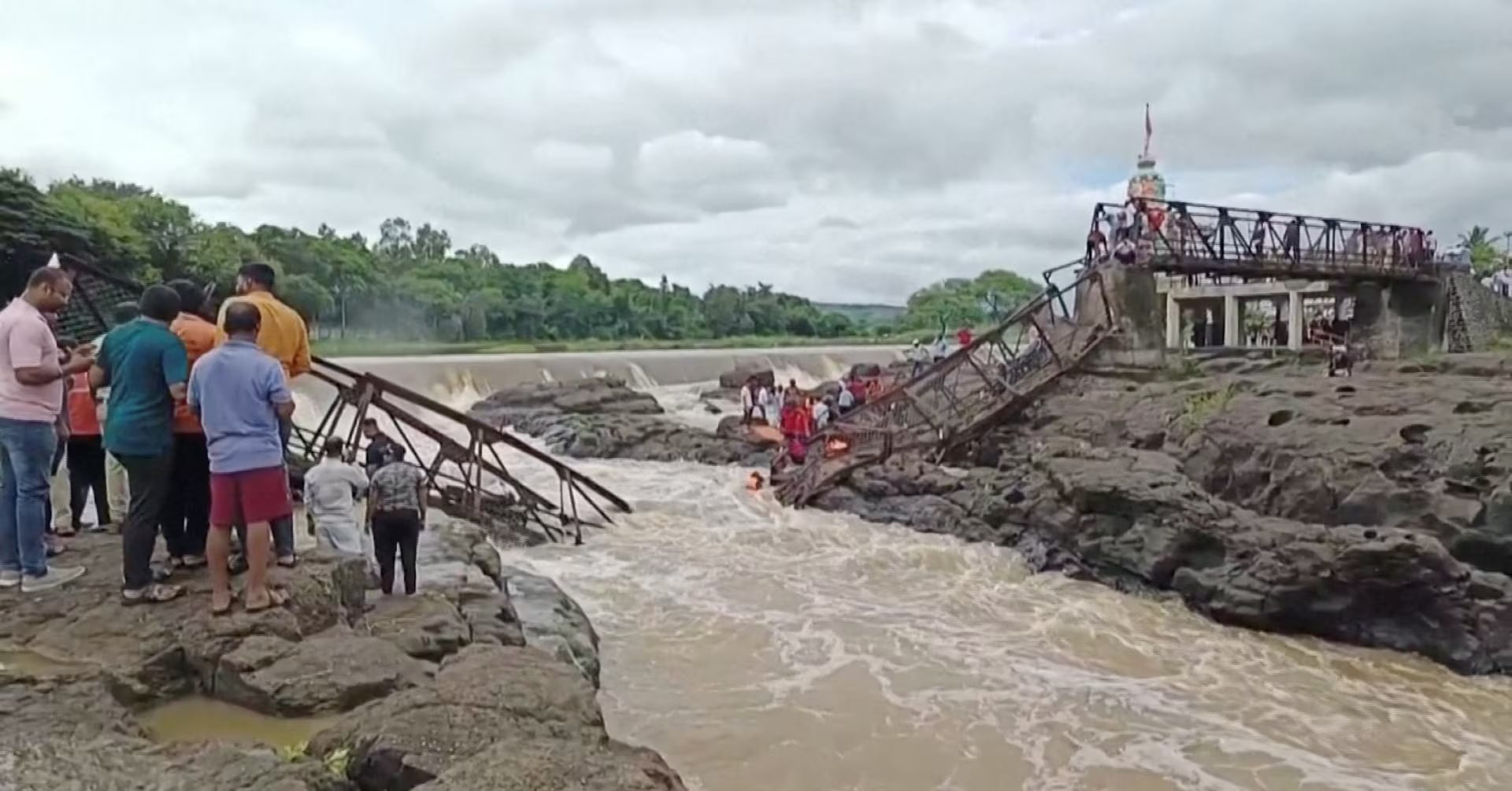
Long-Standing Neglect: A Disaster Waiting to Happen
This tragic incident was not just a freak accident, but the result of:
-
Years of government negligence
-
Ignored civic petitions
-
Unutilized repair funds
-
Lack of timely audits
-
Failure to enforce crowd control
“There are many such bridges that are old, some dating back to the colonial era, and their situation is also dilapidated,” Rohit Pawar warned.
Meanwhile, Shiv Sena (UBT) leader Anand Dubey alleged that ₹8 crore had been sanctioned for the bridge’s reconstruction — but the funds were never disbursed.
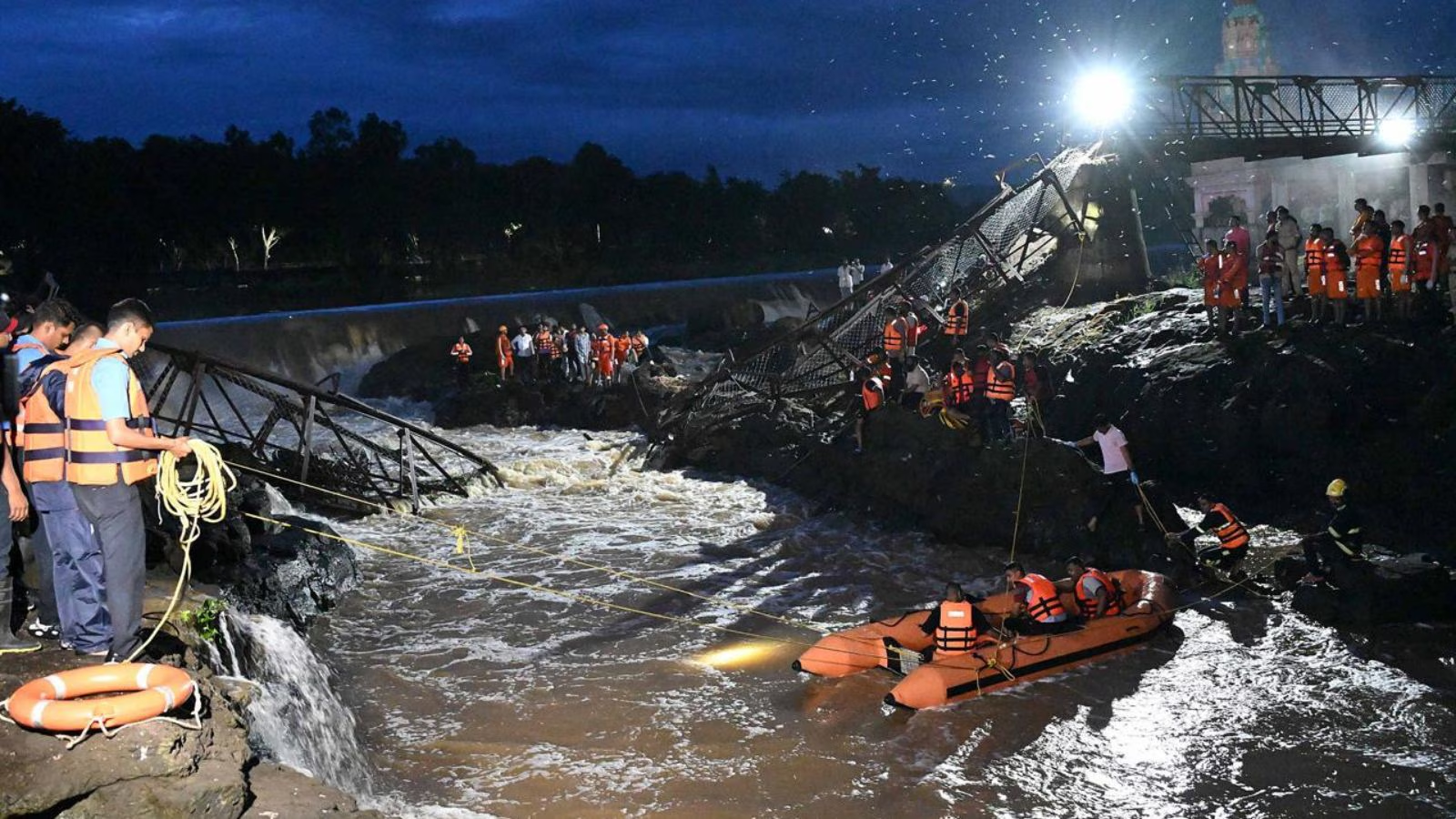
A Tragedy That Could Have Been Prevented
The Pune bridge collapse is a stark reminder of what can happen when bureaucratic inefficiency, public indifference, and poor infrastructure oversight converge. As rescue efforts wind down, questions about accountability loom large.
Who will be held responsible for ignoring years of warnings? Will this incident finally push authorities to audit and reinforce aging infrastructure? Or will the deaths of four innocent lives fade into just another forgotten footnote?
As the state and the nation mourn, what remains clear is this: the Pune tragedy wasn’t just about rusted metal and broken cement — it was about broken systems, broken promises, and a collapse of public trust.
With inputs from agencies
Image Source: Multiple agencies
© Copyright 2025. All Rights Reserved Powered by Vygr Media.

